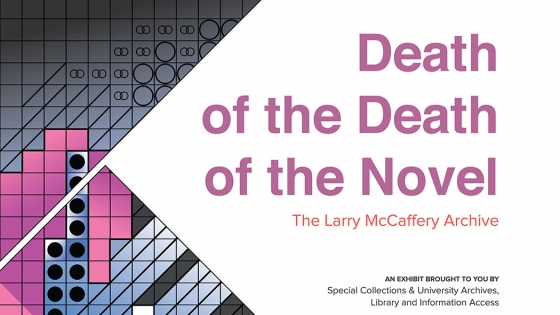Death of the Death of the Novel: The Larry McCaffery Archiv

In partnership with the Common Experience, Digital Humanities, the English Department, and MALAS, Special Collections and University Archives is pleased to announce the opening of our new exhibit, Death of the Death of the Novel: the Larry McCaffery Archive. The exhibit features materials from the archive of Larry McCaffery, a much-loved professor emeritus of English at SDSU and a postmodern literary critic. McCaffery is best known for identifying the most innovative and influential writers in contemporary literature. Special Collections and University Archives is proud to house his collection, which features intimate correspondence, annotated manuscripts, first editions, and groundbreaking interviews with many of America’s literary upstarts and eccentrics. We invite you to experience the literary process through the unique conversations and interventions that established McCaffery as the respected, admired and impossibly hip critic he came to be.
This exhibit is accompanied by a free public lecture series that will include the following special guest speakers:
Fall 2018:
Archive Recovery, a talk by Tom LeClair
Thursday, October 18, 2018 at 3pm
Library & Information Access, LL-108
Spring 2019:
A talk by Larry McCaffery
Wednesday, February 20, 2019 at 1pm
Library & Information Access, LL-108
House of Leaves Reading Group (20 seats, RSVP required, priority to students)
Monday, March 4, 2019 from 1 to 2:30pm
Edward E. Marsh Reading Room, Love Library, first floor
A talk by Mark Danielewski
Wednesday, March 13, 2019 at 2pm
Library and Information Access, Digital Humanities Center, LA-61
The exhibit is open the same hours as the main library. For information on visitor parking, please visit the parking information webpage. A map for disabled access is also available.
This exhibit is brought to you by Special Collections & University Archives | Library & Information Access, the SDSU Common Experience, Digital Humanities, the English Department, and MALAS. We’d like to thank Larry McCaffery whose unique collection made this exhibit possible.
